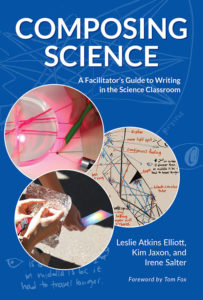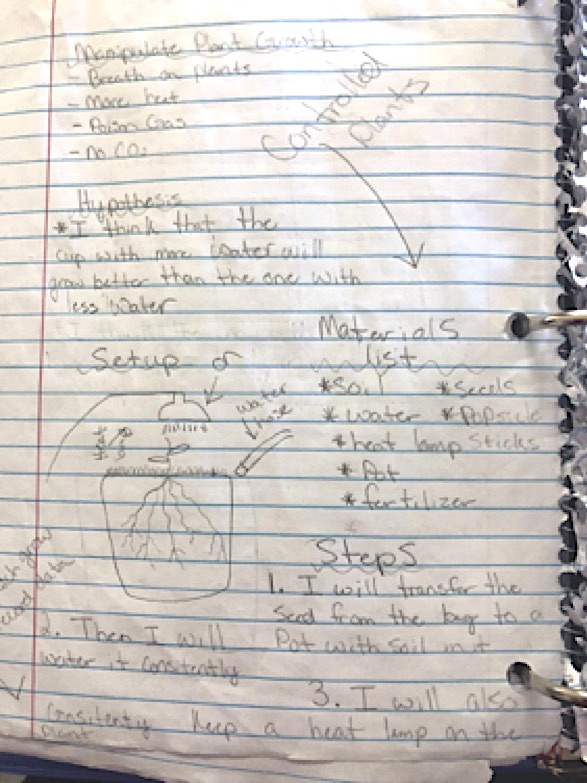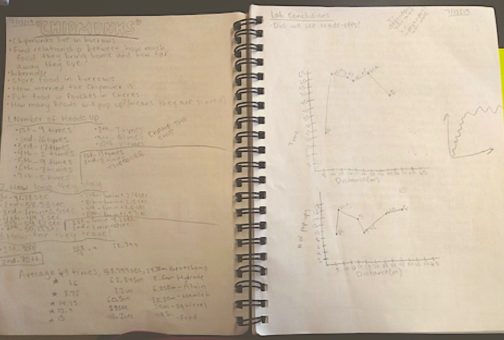Writing to Learn in Your Science Classes
 I can remember the first time that writing across the curriculum was officially introduced to our middle school staff. Let’s just say it was not met with open arms.
I can remember the first time that writing across the curriculum was officially introduced to our middle school staff. Let’s just say it was not met with open arms.
Nevertheless, over the years, our middle school has done a phenomenal job of collaborating and introducing different ways for our students to write across the curriculum.
Writing across the content continues to be a central conversation among teachers and administrators. More specifically, how do teachers implement cross-curricular writing and what does it look like?
To begin, here are some books on writing across content areas to consider adding to your already robust “ to read” pile.
►Content Area Writing by Harvey Daniels, Steven Zemelman, and Nancy Steineke
►Content Area Writing that Rocks by Rebecca G Harper
►Texts and Lessons for Content-Area Reading (with More Than 75 Articles from The New York Times, Rolling Stone, The Washington Post, Car and Driver, Chicago Tribune, and Many Others) by Harvey “Smokey” Daniels and Nancy Steineke
►Ask, Explore, Write! An Inquiry-Driven Approach to Science and Literacy Learning by Troy Hicks, Jeremy Hyler, and Wiline Pangle
Yes, there is a shameless plug for my upcoming co-authored book here. Although my list above may be missing other favorite and helpful books on this topic, the first three I’ve included are ones that I have used and heard great things about. I hope our book will fill a useful niche in the ongoing discussion about how we can use writing in any subject to deepen learning.
Over the past several years my school colleagues and I have developed two major cross-curriculum projects. One is a research paper that is done with a social studies Civil War unit and the other is an argument essay students write in conjunction with a year-long science project. These projects are complex and it has taken years for us to develop them to where they are currently.
In the space I have here, I’d like to share a few simpler cross-curriculum writing ideas that could easily be implemented and help interested teachers begin experimenting with writing as a learning tool outside the ELA classroom. (The first one – science notebooks – is explored in more depth in our new book.)
Science Notebooks
I teach ELA and science. One particular strategy I use with my students is implementing notebooks into my science classroom.
I now ask them to acquire a sketchbook for science class, large enough to use throughout the year. Prior to this year, I’d just used regular composition notebooks. Unlined sketchbooks allow and encourage students to not only write but use the space to draw pictures, doodle, and create graphs and charts.
I also encourage my students to carry their notebooks with them everywhere they go. This would include when they do labs, experiments, are taking notes in the library, or when we go out on school grounds for certain lessons. Below is an example of a student’s science notebook. Although it isn’t on a sketchbook, it still shows how students are writing and drawing pictures.
Implementing science notebooks into a science classroom doesn’t have to be complicated. I do encourage teachers to do more with a notebook than just having students simply do a warm-up writing every day. In my opinion, a single activity doesn’t help the students see value in why they are doing more writing in science.
I am speaking from my own teaching experience when I first implemented cross-curricular writing in my science classroom. At the time, my students wouldn’t take it seriously and only saw it as one more thing to do. Now, students see the notebook as a valuable anchor tool for all the things we do in science.

Graphing, Tables, and Charts
Earlier I mentioned how my students use their notebooks for much more than answering a simple writing prompt. One of the best ways teachers can implement more writing into any classroom is by having students draw and interpret graphs. You can do this in social studies, science, or math class.
One of the most challenging ideas for students to learn is how to interpret data they have put into a table or chart. This data may have come from a lab or a science experiment they have done in class.
After students have interpreted that data, they have to choose the type of graph that best represents the data they have in their chart or table. As you can see in the student example below, they have recorded their data on the left side of the notebook and on the right-hand side they are testing different ways to display the data to best represent their findings.
Along with composing graphs, students can write about the graphs and describe what the graph is displaying and how they interpret it. In addition, I really enjoy having students look at two different graphs and do a comparative analysis.
This doesn’t have to be a long writing assignment. A simple 6-8 sentence paragraph will do, explaining the similarities and differences they see and what could cause the changes they observed.
In my classes, this not only helps students when they have to write their argument paper later in the year, it’s a skill that can be used when they take standardized tests in the spring.
You don’t need to grade – but please reinforce
Implementing more writing into science, math and social studies doesn’t have to be difficult. And it doesn’t require content area teachers to grade areas like spelling, grammar, and sentence structure. On the other hand, it does mean making a commitment to having students practice good writing skills in all content areas and not just in the English classroom.
Too many times I hear teachers tell me how students don’t feel they have to carry those skills into other classrooms. “That it is just an English thing.” By implementing more writing into other content areas – and encouraging your students to “write like you do in English class” – students will gain an understanding that good writing skills are relevant in all areas in and out of school.
No matter whether the activity is big or small, I believe it truly is everyone’s responsibility to help students have the best writing skills possible. A few grade-free notes about spelling, word choice and sentence structure will reinforce the message.





































I really enjoyed your article and I plan to implement the “sketchbook” idea in 2022 when school is back in session after winter break.
Thank you Susan. Please don’t be afraid to reach out with any questions you may have. Enjoy your holiday break!